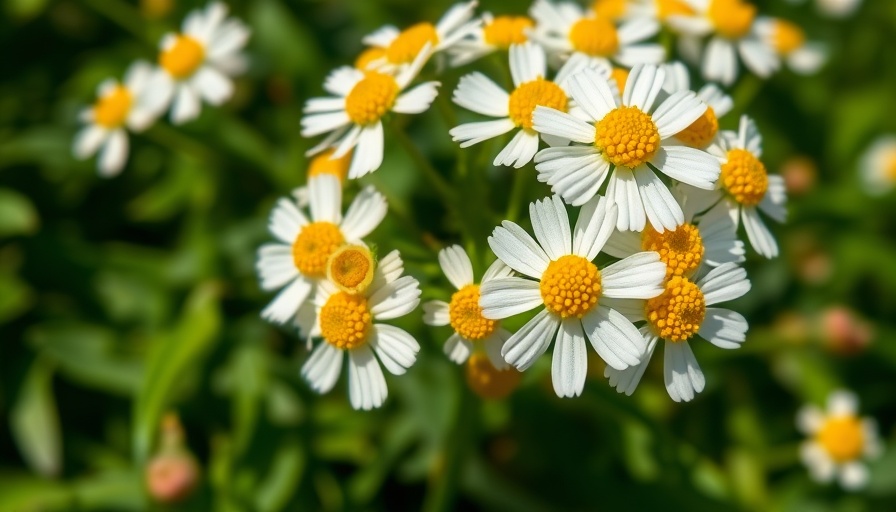
The Beauty and Benefits of Feverfew: Beyond Aesthetics
Feverfew (Tanacetum parthenium) is more than just a stunning addition to your garden; it has a rich history as an herbal remedy renowned for its effectiveness in alleviating headaches. Even if you're not seeking medicinal properties, this perennial offers an attractive landscape option due to its charming white, daisy-like flowers and bushy foliage. Whether you're a seasoned gardener or a novice, embracing feverfew in your garden promises both visual delight and potential health benefits.
Understanding Feverfew: A Quick Overview
Commonly known as featherfew or wild chamomile, feverfew grows to about 8 to 24 inches tall and thrives in well-draining sandy or loamy soils. With a preference for full sun exposure, this herb blooms beautifully in summer, showcasing its bright appearance through various gardening seasons. For gardeners in USDA Hardiness Zones 5 to 10, feverfew is a resilient choice, adapting to cooler conditions while often exhibiting evergreen characteristics in warmer climates.
Delving Into Plant Care: How to Grow Feverfew Successfully
When considering feverfew for your garden, attention to several key factors ensures successful growth. Firstly, sowing seeds at a depth of 1/4 inch with a spacing of around 12 inches is ideal for fostering healthy plants. The time to maturity is roughly 80-90 days, rewarding your patience with splendid blooms. Regular watering—enough to maintain moderate moisture—will keep your plants thriving and attractive.
Enhanced Landscape: Feverfew’s Role in Garden Design
Incorporating feverfew into your landscaping ideas adds texture and color to your flower bed or herb garden. Its white flowers offer a striking contrast against darker foliage or vibrant plants, creating an appealing arrangement. Use feverfew to decorate borders or mix it with other pollinator-friendly plants to invite bees and butterflies into your space. This integration encourages a healthy ecosystem, highlighting the importance of options that support garden biodiversity.
Harvesting and Preserving Feverfew: A Step-By-Step Guide
Harvesting feverfew is straightforward: gather leaves and flowers in summer when they are most potent. If you're aiming to preserve this herb for medicinal use, consider air-drying or freezing it. By storing it correctly, you not only keep its medicinal properties but also have an abundance of this aromatic herb available for your culinary or wellness endeavors throughout the year.
Gardening Projects: Creating a Sustainable Feverfew Garden
As more people lean into sustainable practices, feverfew stands out as a perfect candidate for organic gardening. Pairing it with companion herbs can easily deter pests and enhance plant health. Additionally, composting and practicing crop rotation will build soil fertility as well as support a thriving garden ecosystem. Utilizing raised garden beds or container gardening can further maximize your growing space, making it accessible regardless of your garden's layout.
Gardening Tips for Healthy Crop Rotation
Incorporating feverfew into your crop rotation strategy can yield impressive outcomes; it may help mitigate soil depletion and prevent pest accumulation. By varying the placement of your plants each season, you not only prolong the lifespan of your crops but also promote healthier soil conditions—a key pillar of organic gardening. Implementing these techniques transforms your gardening experience into a systematic approach to enhanced health and productivity.
In conclusion, growing feverfew offers not only a beautiful enhancement to your garden but also therapeutic uses that might resonate with health-conscious gardeners. By combining various gardening techniques and integrating this herb into comprehensive garden designs, you create a space filled with life and vibrancy.
If you're ready to experience the wonders of feverfew for yourself, now is the perfect time to explore planting tips and techniques. Get your hands dirty and enjoy cultivating this delightful herb, bridging the gap between health and holistic gardening!
 Add Row
Add Row  Add
Add 




Write A Comment